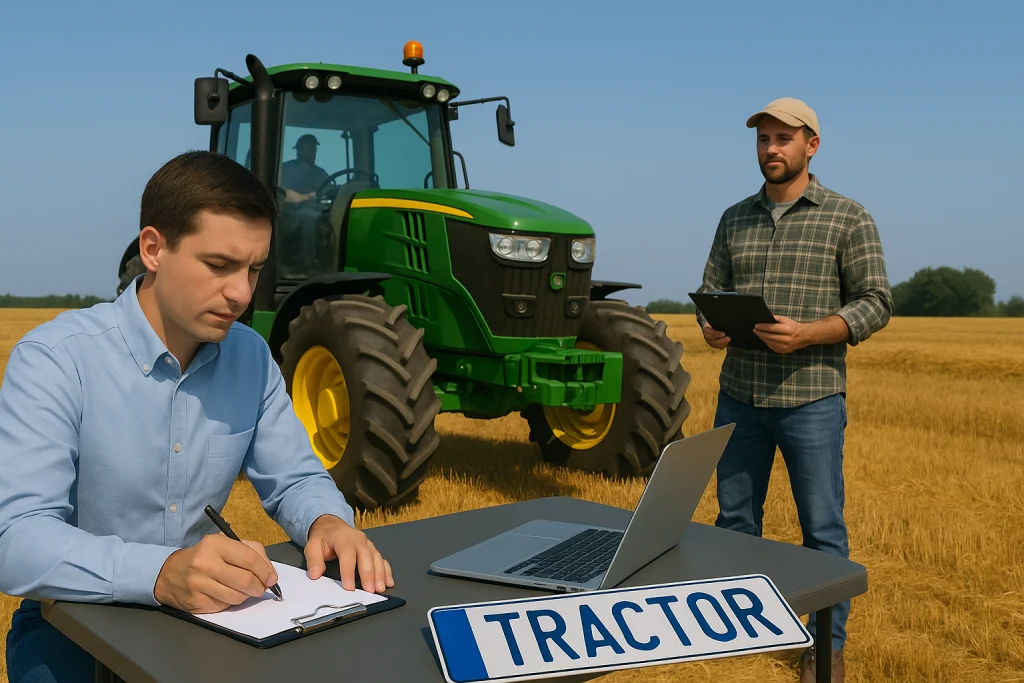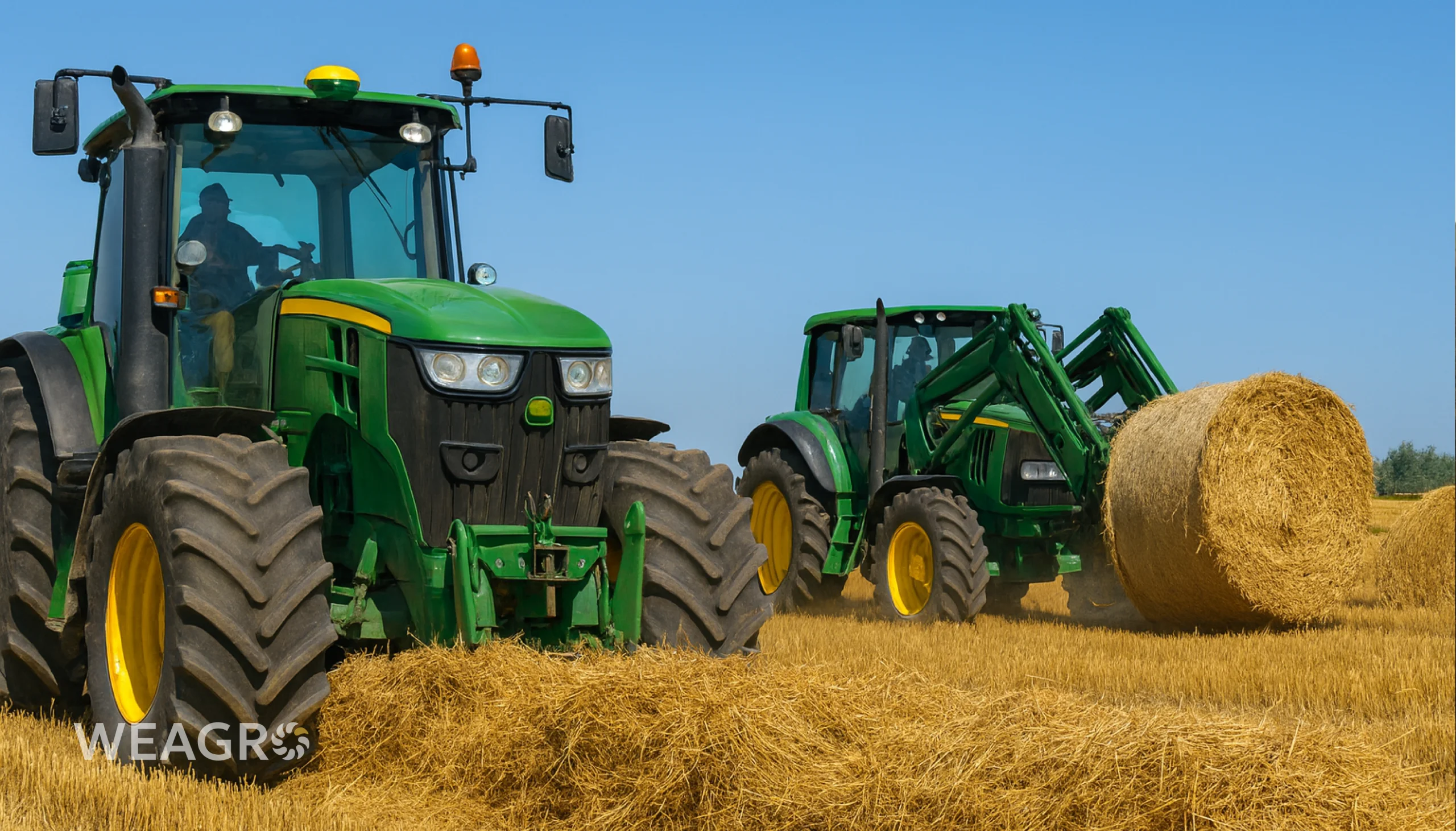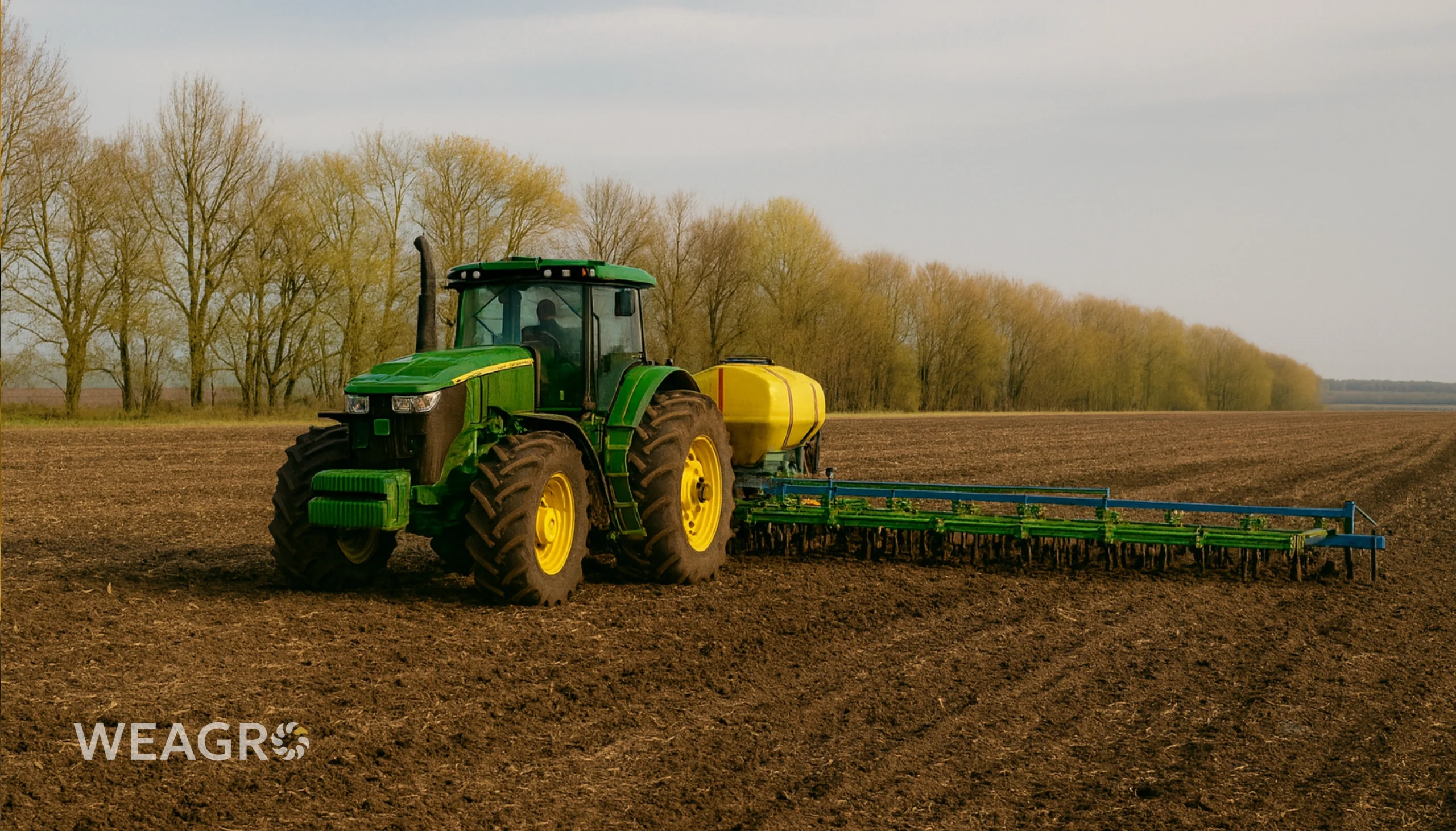A tractor is the heart of any farm, as it’s hard to imagine effective sowing, soil cultivation, or cargo transportation without it. However, purchasing equipment is just the first step. To be able to fully use the machine, you must register it. This is not a formality but a legally important process that confirms your ownership rights and ensures safe operation.
Owners who neglect registration often face unpleasant consequences. First, they have no right to drive on public roads. Second, in case of theft, it will be much more difficult to defend their rights. Third, unregistered equipment cannot be insured. Finally, without proper documentation, you cannot sell the tractor or officially transfer it to another owner. In fact, from a legal perspective, such equipment is considered ownerless.
Registration Term and Procedure
Legislation stipulates that after purchasing a tractor, the owner has ten days to contact the relevant authority and submit documents. If for some reason you cannot meet this deadline, in exceptional cases, this period may be extended. This requires valid reasons – for example, business trips or illness, confirmed by official documents.
The registration process consists of several stages. First, you need to prepare a package of documents that confirms ownership rights and technical fitness of the machine. The next step is a technical inspection conducted by a state inspector. Only after this can you submit an application to the territorial body of the State Food and Consumer Service. On average, the entire procedure takes about a week. After completion, the owner receives a registration certificate and a license plate. Until this moment, using the tractor is prohibited – neither in the field nor on roads.
A pleasant detail is that tractor registration is completely free. The law does not provide for any additional administrative fees or payments.
Where Registration Takes Place
The procedure can be conditionally divided into two parts. First, the tractor is inspected by a state inspector. They confirm the technical condition of the machine and verify the identification numbers. Only after this does the case move to the State Food and Consumer Service. This body makes the final decision and issues documents.
It’s important to note that if the tractor is under lien, for example, under a loan, written consent from all parties recorded in the state register of encumbrances will be required.
Required Documents for Registration

For successful registration, you’ll need to prepare quite a list of papers. The main ones are the owner’s passport and identification code. You also need to provide the inspector’s conclusion after technical inspection and the act of assigning an identification number. Key documents confirming ownership rights are essential: this can be a purchase-sale agreement, acceptance certificate from the manufacturer, customs declaration, court decision, or even a deed of gift. If there are multiple owners, their written consent is required.
Additionally, receipts for paid taxes, conformity certificates from the manufacturer, and for legal entities – an extract from the USREOU are mandatory. If the tractor has already been registered and you’re buying it used, you’ll additionally need a certificate of deregistration from the previous owner.
Read also: Farmers can get quality WOG fuel with installment payments
Registration without Documents: is it Possible
Often farmers buy used equipment “from hands” and face the problem of missing documents. In such situations, the procedure becomes significantly more complicated. To register the tractor, you’ll need to go to court. The application must include chassis and engine identification numbers, which are checked to ensure the equipment isn’t wanted. You also need to involve two witnesses who will confirm the purchase. However, even with all these conditions met, the final decision remains with the court, and there’s always a risk of rejection.
Self-Made and Modified Equipment
Another common case is when a tractor has been assembled independently or significantly modernized. In such situations, it’s also impossible to immediately submit documents for registration. First, the owner must collect invoices or receipts for purchased components and parts, obtain a number assignment act, and most importantly, an expert conclusion. It must confirm that the equipment meets all current standards and can be operated safely.
How to Deregister a Tractor
Selling equipment, transferring ownership to another person, or liquidating a business – all these require deregistering the tractor. For this, the owner prepares an application, passport, and provides current registration documents. For legal entities, a company or court decision is required, along with co-owners’ consent.
Before final deregistration, the inspector checks the technical condition of the main machine components. After this, the owner receives a deregistration document and transit license plates. The entire procedure takes approximately one month.
Cases when Registration may be Denied
Documents aren’t always accepted on the first try. The most common reasons for rejection are duplicate registration (when the equipment is already registered to another owner), lack of customs clearance, or problems with foreign document translations. Incomplete document packages or errors in them are also common. In worse cases, the inspector may discover falsification of identification numbers or supporting documents. If this happens, the issue must be resolved through administrative court.
Specifics for Legal Entities and Individual Entrepreneurs
The procedure for registering a tractor is the same for everyone. The only difference is in choosing the territorial body. Legal entities undergo registration at their company location, while individual entrepreneurs register at their place of residence or actual location. All other requirements for the document package remain unchanged.
Read also: Fuel consumption standards for agricultural work: for tractors, lawn mowers, loaders
After completing the deregistration process and subsequent sale of agricultural equipment, funds can be directed towards purchasing new or modernizing existing equipment. The online service WEAGRO offers unique conditions to agribusiness: decisions are made on the day of application, without additional documents, collateral, or guarantors. This allows for quick purchases with payments spread over several months.
How to Avoid Problems: Solutions from WEAGRO
The biggest difficulties arise when a tractor is purchased without documents or from an unverified supplier. This creates risks of long court processes, registration denials, and financial losses. The online agricultural installment service WEAGRO helps avoid such situations.
Its advantage is that only verified suppliers are allowed to cooperate. All equipment sold through the service has a complete package of documents, allowing for hassle-free registration. Additionally, farmers and agricultural enterprises can purchase tractors with payment deferrals up to 365 days, and financing decisions are made within 30 minutes. This means you not only receive quality equipment but also protection from any legal problems in the future.
Conclusions
Tractor registration is a necessary and mandatory step after purchasing equipment. It guarantees legal use of the machine, protects owner rights, and ensures the possibility of selling or transferring equipment in the future.
To avoid risks, it’s important to prepare all documents in advance, pass technical inspection, and contact the appropriate authority. In complex cases, such as missing documents or modified equipment, the process may require court proceedings. That’s why it’s more practical to buy tractors from verified suppliers. The online service WEAGRO allows you to do this quickly, advantageously, and with complete confidence in the legality of future registration.









